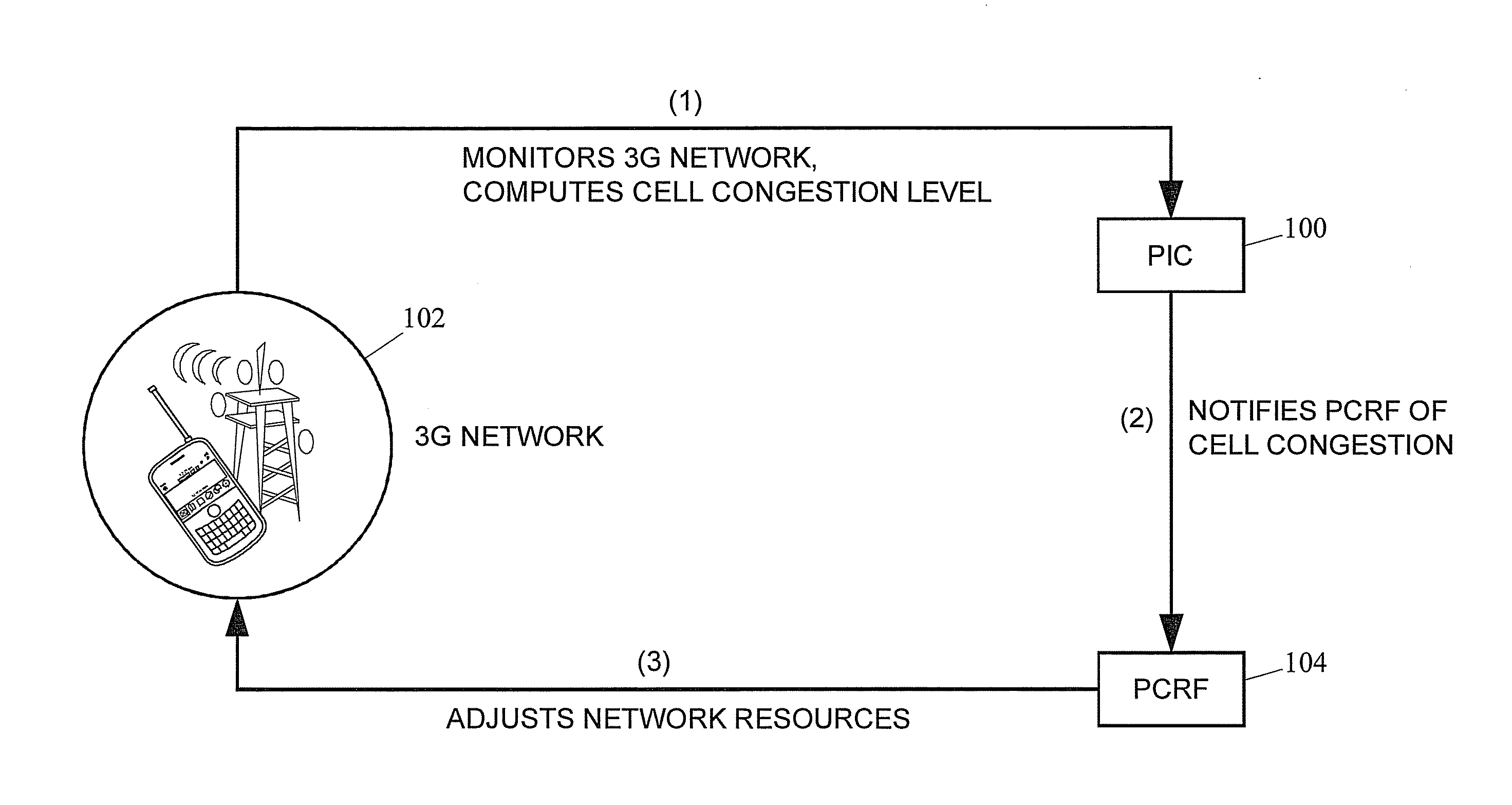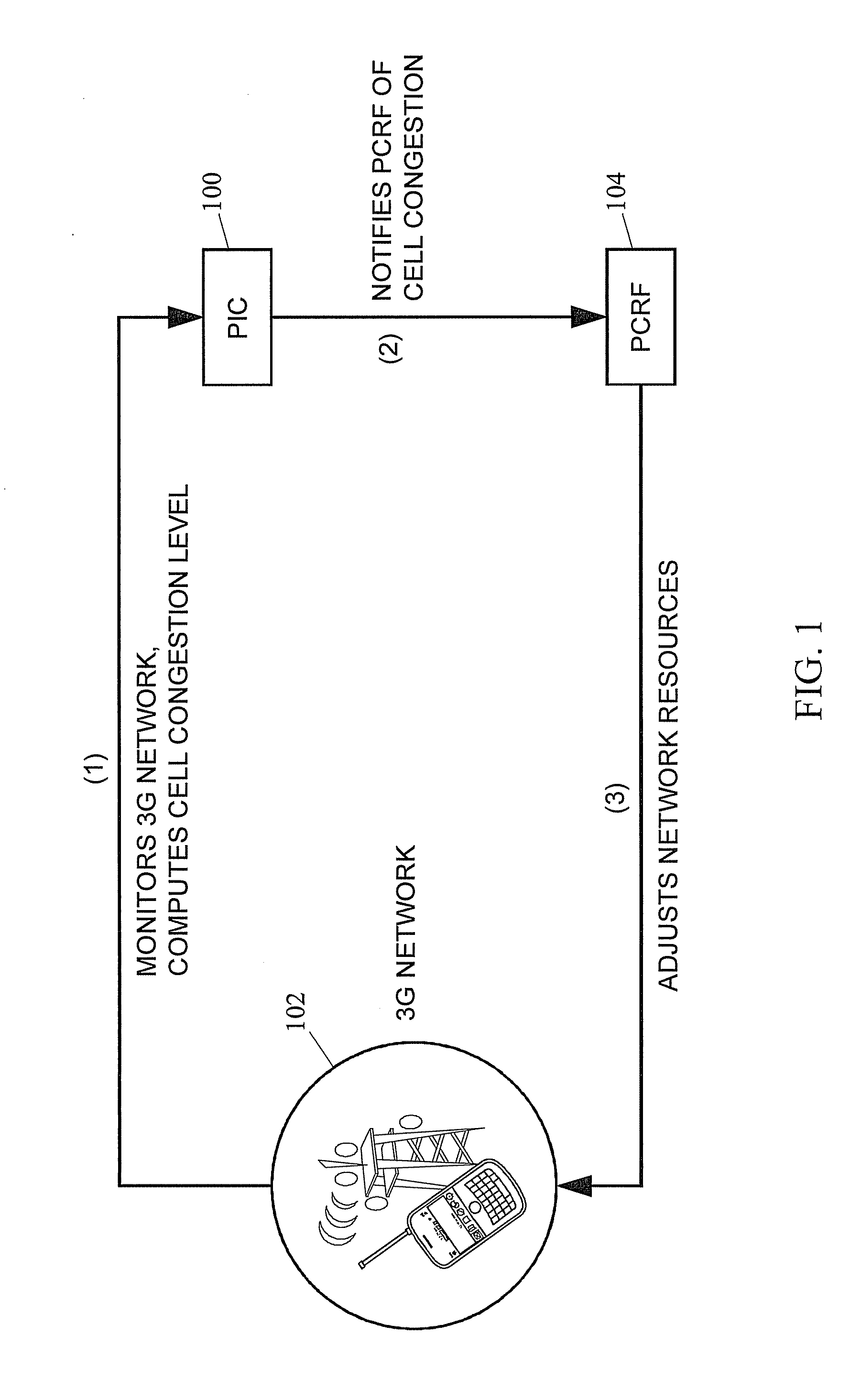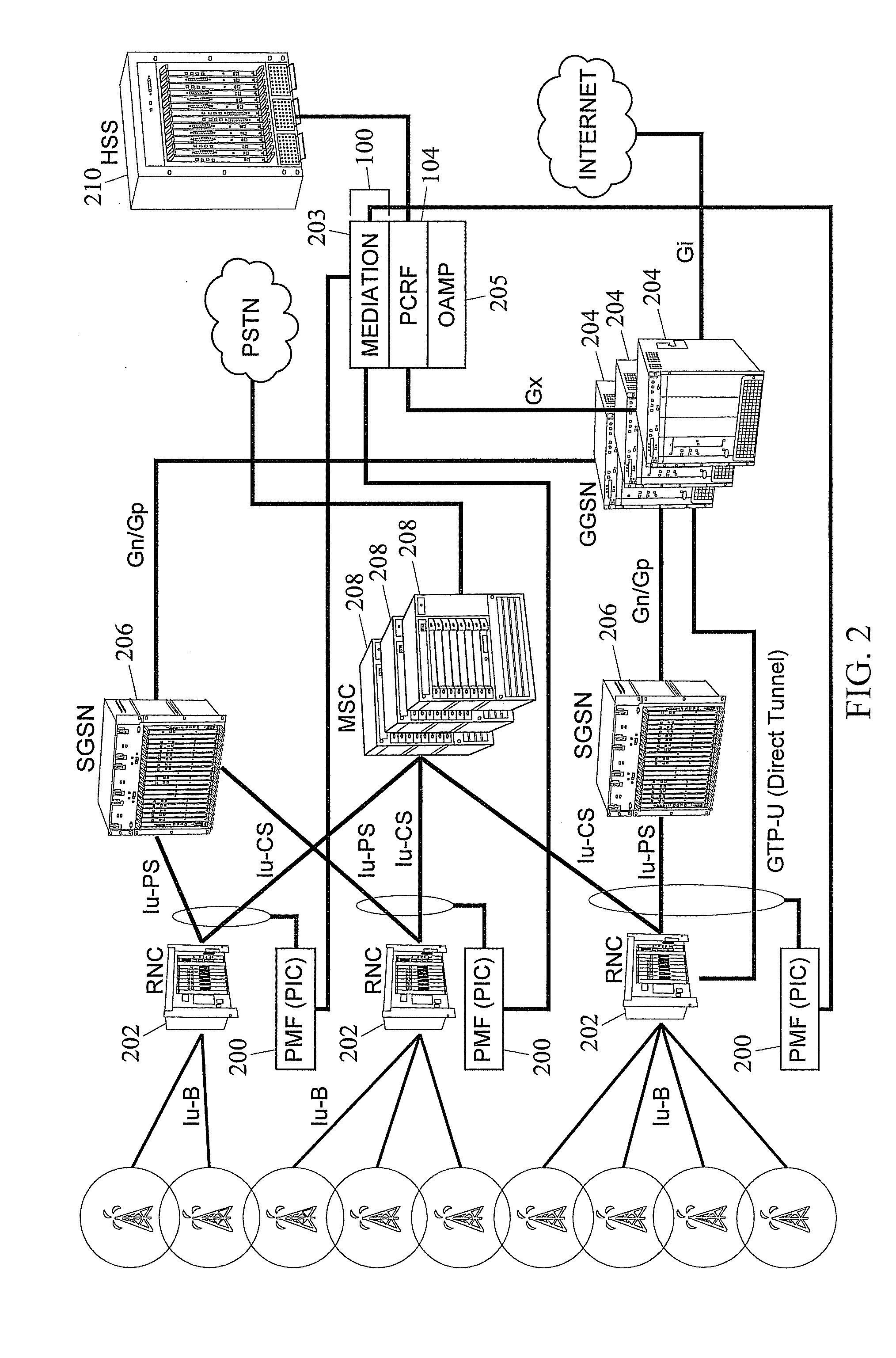Policy and charging rules function (PCRF) and performance intelligence center (PIC) based congestion control
a technology of congestion control and policy and charging rules, applied in data switching networks, frequency-division multiplexes, instruments, etc., can solve problems such as excessive circuit-switched calls made by subscribers from a cell, service providers are facing radio access network congestion challenges, and service degradation of mobile subscribers attached to congested cell sites
- Summary
- Abstract
- Description
- Claims
- Application Information
AI Technical Summary
Benefits of technology
Problems solved by technology
Method used
Image
Examples
Embodiment Construction
[0016]According to one aspect, the subject matter described herein includes a RAN congestion mitigation solution. The RAN congestion mitigation solution detects congestion in radio cells in near real -time by monitoring, measuring and interpreting signaling and data messages exchanged between network elements in a 3G, 4G, or NG network, where N is an integer greater than 4. On cells that are congested, the solution attempts to mitigate the effects of the congestion on the packet switched data traffic by applying bandwidth management policies. Examples of such policies include:[0017]1. Lowering the overall bandwidth utilization in the affected cell by lowering the bandwidth utilization of subscribers who are over-using network resources. The solution identifies subscribers who are consuming unusually high proportions of the bandwidth and lowers their quality of service. This enables the rest of the subscribers to get access to the additional amount of bandwidth that got freed up, the...
PUM
 Login to View More
Login to View More Abstract
Description
Claims
Application Information
 Login to View More
Login to View More - R&D
- Intellectual Property
- Life Sciences
- Materials
- Tech Scout
- Unparalleled Data Quality
- Higher Quality Content
- 60% Fewer Hallucinations
Browse by: Latest US Patents, China's latest patents, Technical Efficacy Thesaurus, Application Domain, Technology Topic, Popular Technical Reports.
© 2025 PatSnap. All rights reserved.Legal|Privacy policy|Modern Slavery Act Transparency Statement|Sitemap|About US| Contact US: help@patsnap.com



